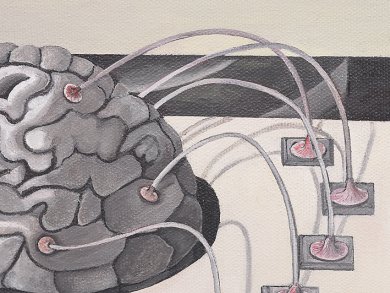Electrocorticography is a technique used in neurosurgery to localize pathological areas of the brain such as those evoking epileptic seizures. During this procedure, microelectrodes are directly placed on the exposed brain surface to record the electrical activity of the cerebral cortex – a specialized neuronal tissue controlling consciousness, language, and thought. While electrodes’ performance can be improved by using nanoparticle coatings, these materials cannot be used in clinical settings as their direct contact with the nervous tissue is hazardous.
Elisa Castagnola, Istituto Italiano di Tecnologia, Italy, and colleagues developed a way around this problem. The researchers coated microelectrodes with a nanocomposite consisting of poly(3,4-ethylenedioxythiophene) and carbon nanotubes. Subsequently, they encapsulated the electrodes into a human fibrin-based hydrogel which prevented the direct exposure of the nanomaterial to the brain but did not interfere with the electrochemical performance of the electrodes.
In this way, the scientists obtained biocompatible microelectrodes that can provide high quality electrical recording.
- Biologically Compatible Neural Interface To Safely Couple Nanocoated Electrodes to the Surface of the Brain,
E. Castagnola, A. Ansaldo, E. Maggiolini, G. N. Angotzi, M. Skyrap, D. Ricci, L. Fadiga,
ACS Nano 2013.
DOI: 10.1021/nn305164c




